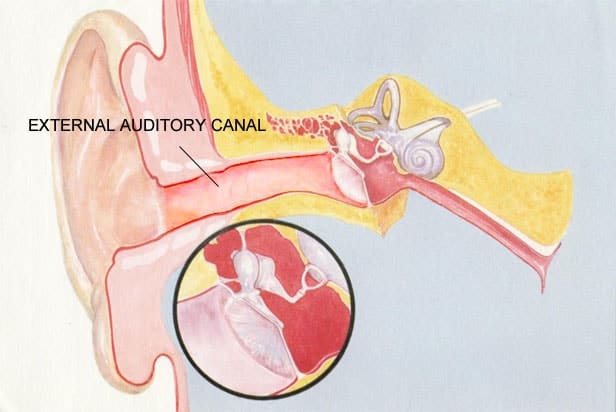Ear Discharge Otorrhoea
Discharge from the ear is invariably due to an infection of the ear canal (otitis externa) or middle ear (acute or chronic otitis media). An offensive smelling discharge is more common with chronic infections, particularly due to gram negative bacteria

Microscopy
Why?
Microscopy means carrying out a detailed examination of the external canal and ear drum using an operating microscope for magnification. The normal eardrum is only about 1 cm in diameter, so enlarging this by x4 or higher results in more accurate diagnostic information.
How?
Typically the examination chair is reclined so that the patient’s head can be stablised on the headrest to prevent even minor movements, which could cause discomfort. A single-use sterile plastic speculum is introduced into the earhole and the overhead microscope swung into position. It is a painless short procedure.

Microsuction
Why?
Accumulated wax is often present in a normal ear canal. It can prevent proper inspection of the skin lining the canal or ear drum, and its presence can interfere with diagnostic testing. Excessive wax blocking an ear canal can cause hearing loss and therefore affect the results of pure tone audiometry or interfere with the free passage of water during the caloric test. Flakes of wax may also block the small soft rubber ear probes used with tympanometry, Eustachian tube function and Otoacoustic emission testing.
How?
Typically wax is removed by inserting a small suction device through a sterile plastic speculum using the microscope, a procedure termed microsuction. This is normally a painless procedure. Syringing the ear canals with clean warm water has been a traditional method for removing wax, but requires special care or this procedure may result in permanent damage to the ear. ENT surgeons are reluctant to recommend syringing because there may be underlying problems obscured by the wax, such as a perforated or weak ear drum, which significantly increases the risk of causing permanent damage or infection.

Ear Swab For Microscopy And Culture
Why?
Infections caused by bacteria or fungi require antimicrobial treatment, which varies depending on the specific infective organism. Acute infections result in the production of pus, which is commonly thick yellow-green in colour and may have an unpleasant smell. When an infection is seen or suspected, a sample is therefore sent for laboratory analysis.
How?
After inserting a sterile plastic speculum into the ear hole, a fine sterile cotton bud probe is immersed in the pus and immediately stored in preservative for transfer to the laboratory. Examination under the microscope (microscopy) by the Microbiologist enables the type of infective organism to be diagnosed. Subsequently, growing the organism on a special gel (culture) and applying various drugs allows the specific antimicrobial agent required to kill the organisms causing the infection to be determined.
The private health insurances we work with
Harley Street ENT is recognised by a wide range of leading UK and international private health insurers, ensuring easy access to our care for patients with approved cover.

Need help and advice? Speak to an advisor
To discuss your needs in confidence or arrange a consultation, please contact our advisory team, who will be happy to assist you.







